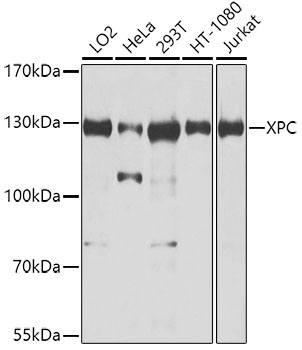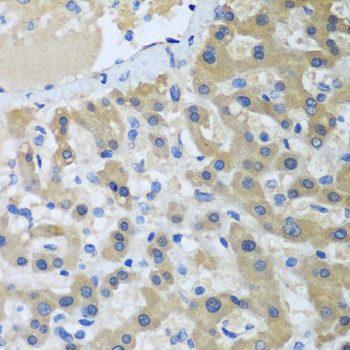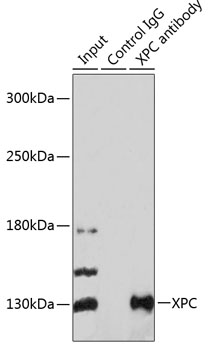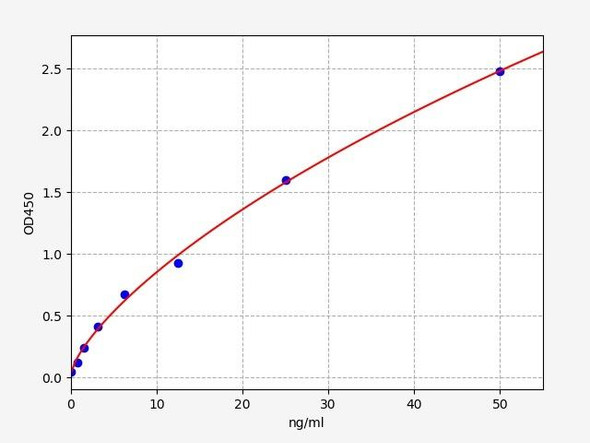| Background: | This gene encodes a component of the nucleotide excision repair (NER) pathway. There are multiple components involved in the NER pathway, including Xeroderma pigmentosum (XP) A-G and V, Cockayne syndrome (CS) A and B, and trichothiodystrophy (TTD) group A, etc. This component, XPC, plays an important role in the early steps of global genome NER, especially in damage recognition, open complex formation, and repair protein complex formation. Mutations in this gene or some other NER components result in Xeroderma pigmentosum, a rare autosomal recessive disorder characterized by increased sensitivity to sunlight with the development of carcinomas at an early age. Alternatively spliced transcript variants have been found for this gene. |
| UniProt Protein Function: | Involved in global genome nucleotide excision repair (GG-NER) by acting as damage sensing and DNA-binding factor component of the XPC complex. Has only a low DNA repair activity by itself which is stimulated by RAD23B and RAD23A. Has a preference to bind DNA containing a short single-stranded segment but not to damaged oligonucleotides. This feature is proposed to be related to a dynamic sensor Function: XPC can rapidly screen duplex DNA for non-hydrogen-bonded bases by forming a transient nucleoprotein intermediate complex which matures into a stable recognition complex through an intrinsic single-stranded DNA-binding activity. |
| NCBI Summary: | This gene encodes a component of the nucleotide excision repair (NER) pathway. There are multiple components involved in the NER pathway, including Xeroderma pigmentosum (XP) A-G and V, Cockayne syndrome (CS) A and B, and trichothiodystrophy (TTD) group A, etc. This component, XPC, plays an important role in the early steps of global genome NER, especially in damage recognition, open complex formation, and repair protein complex formation. Mutations in this gene or some other NER components result in Xeroderma pigmentosum, a rare autosomal recessive disorder characterized by increased sensitivity to sunlight with the development of carcinomas at an early age. Alternatively spliced transcript variants have been found for this gene. [provided by RefSeq, Mar 2009] |
| UniProt Code: | Q01831 |
| NCBI GenInfo Identifier: | 224809295 |
| NCBI Gene ID: | 7508 |
| NCBI Accession: | NP_004619.3 |
| UniProt Secondary Accession: | Q01831,Q53GT7, Q96AX0, B4DIP3, E9PB96, E9PH69, |
| UniProt Related Accession: | Q01831 |
| Molecular Weight: | 15,712 Da |
| NCBI Full Name: | DNA repair protein complementing XP-C cells |
| NCBI Synonym Full Names: | XPC complex subunit, DNA damage recognition and repair factor |
| NCBI Official Symbol: | XPC |
| NCBI Official Synonym Symbols: | XP3; RAD4; XPCC; p125 |
| NCBI Protein Information: | DNA repair protein complementing XP-C cells |
| UniProt Protein Name: | DNA repair protein complementing XP-C cells |
| UniProt Synonym Protein Names: | Xeroderma pigmentosum group C-complementing protein; p125 |
| Protein Family: | DNA repair protein |
| UniProt Gene Name: | XPC |









